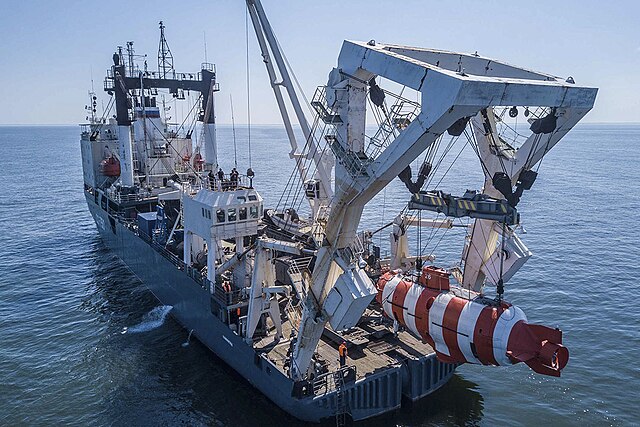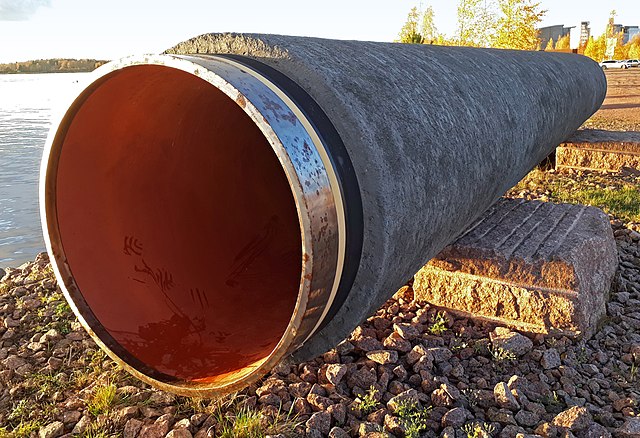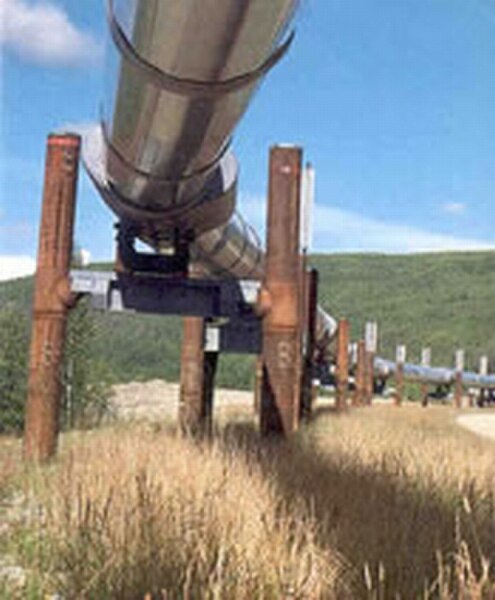Nord Stream is a pair of offshore natural gas pipelines in Europe that run under the Baltic Sea from Russia to Germany. It comprises the Nord Stream 1 (NS1) pipeline running from Vyborg in northwestern Russia, near Finland, and the Nord Stream 2 (NS2) pipeline running from Ust-Luga in northwestern Russia near Estonia. Both pipelines run to Lubmin in the northeastern German state of Mecklenburg-Vorpommern. Each pipeline comprises two pipes, denoted A and B; each of the four pipes is approximately 1,200 kilometres (750 mi) long and with approximate diameters of 1,220 millimetres (48 in). The combined capacity of the four pipes is 110 billion cubic metres per annum of natural gas.
The Nord Stream opening ceremony on 8 November 2011 with François Fillon, Angela Merkel, Mark Rutte, Dmitry Medvedev, Günther Oettinger, and Erwin Sellering
The Russian salvage ship SS-750 with its mini-submarine was observed by the Danish Navy at the site of the sabotage four days before the explosions
A piece of Nord Stream pipe on public display in Kotka, Finland
The semi-submersible pipe-laying vessel Castoro Sei operating for Nord Stream in the Baltic Sea south-east of Gotland, Sweden, in late March 2011
A pipeline is a system of pipes for long-distance transportation of a liquid or gas, typically to a market area for consumption. The latest data from 2014 gives a total of slightly less than 2,175,000 miles (3,500,000 km) of pipeline in 120 countries around the world. The United States had 65%, Russia had 8%, and Canada had 3%, thus 76% of all pipeline were in these three countries. The main attribute to pollution from pipelines is caused by corrosion and leakage
HDPE pipelines on a mine site in Australia
A "Pig" launcher/receiver, on the natural gas pipeline in Switzerland
An elevated section of the Alaska Pipeline
Gas pipe in the dry region of Antofagasta, Chile








